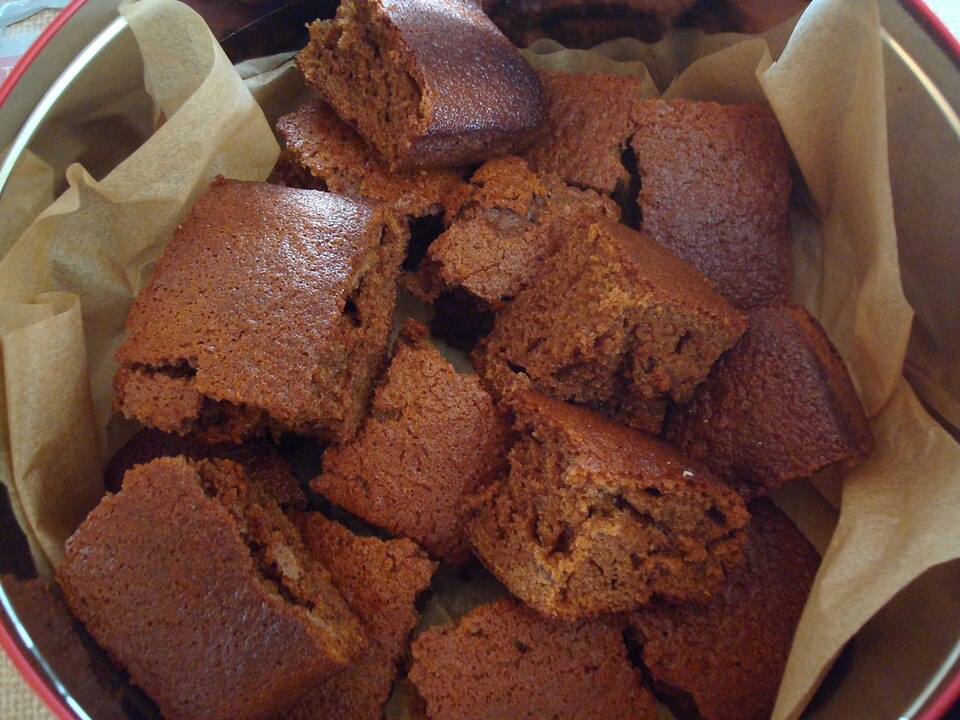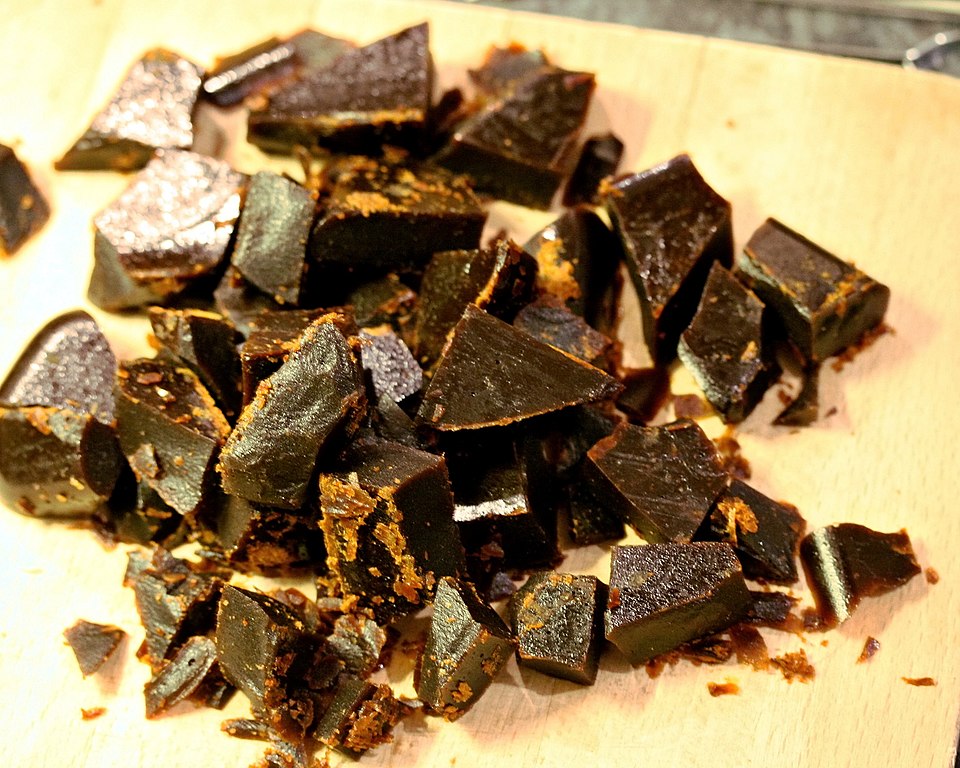Two absolute classic Guy Fawkes Night treats stand out: Yorkshire parkin and treacle toffee, which are both gloriously sticky, tasty and warming for when you’re watching fireworks light up the sky (or comforting your pets who are hiding behind the sofa. Either works).
Parkin

Parkin is basically gingerbread’s northern cousin, but darker, stickier, and cakier (because it’s a cake). It’s full of oaty, treacly goodness and is very, very satisfying to eat.
When you eat parkin, you know about it. This stuff is not light and fluffy; parkin is dense and wonderfully gooey, especially if you make it a few days before you eat it – it tends to get better with age.
What makes parkin special is the black treacle (when the cake is made in Yorkshire) or golden syrup (when it’s made in Lancashire) that give it that deep, almost burnt-sugar flavour, combined with oats and plenty of ginger. This means it has a really unparalleled texture, it is sweet and satisfying, and it has a kick. Honestly, it’s one of my faves.
If you’ve never had it, buy or make some to give it a try and find out exactly why northerners in particular are so passionate about it.
Parkin can be eaten any time of year, but it is associated with Guy Fawkes Night and perfect as you wave your sparklers.
When you’re standing around a bonfire in November, probably in gale-force winds and wondering why you bothered to leave the house, there’s just something deeply satisfying about eating a square of sticky parkin to make it all feel ok again.
Treacle toffee

My childhood associations with Bonfire Night include watching terrifying public information films at school, and my dad smashing a tray of treacle toffee with a hammer. It often took several attempts – that stuff is hard.
But if parkin is the cake of Bonfire Night, treacle toffee is the night’s confectionery. Also called bonfire toffee, it is dark, brittle, and takes incredible. Made from black treacle, butter, and sugar, it sets into hard sheets that can take some muscles to break into pieces.
It’s also liable, if I’m really honest, to remove a tooth or two from your jaw.
Getting treacle toffee right is a bit tricky (and while I’ve baked many a slab of parkin, I’ve never attempted treacle toffee. I’ve ruined too many pans making fudge to ever make sweets again). But when it turns out well, it’s pretty legendary. The chunks or shards are perfect for passing around as everyone gathers round the fire.
The link between treacle toffee and Bonfire Night goes way back. Before you could just pop to the shops for sweet snacks, people made treacle toffee at home because it was cheap and you could make it in bulk to share at communal bonfires or around your neighbours.
Why so much treacle?
Both parkin and treacle toffee are built around black treacle, and it’s proving difficult to find out exactly why. There were times in history that treacle was more affordable than refined sugar, but this was not always the case.
Treacle in baking does help to keep a cake moist for longer, so it could be that treacle-based cakes were popular at this time of year so that they could be baked when ingredients were still readily available and could be relied upon to last a bit longer.
Whatever you may hear, however, reports of northern treacle mines have been greatly exaggerated.
Other Bonfire Night treats
Parkin and treacle toffee might be the top story, but there’s a whole range of food that has become part of the Bonfire Night tradition:
- Toffee apples are a classic at fairgrounds, with a bright red, crunchy coating on the outside and a whole apple on the inside. I always found them impossible to eat, but for many, they’re perfect for eating while watching the Catherine wheels and Roman candles
- Jacket potatoes can be wrapped in foil and cooked in a fire’s embers (though admittedly more commonly with campfires than full-on bonfires). You really feel like you’re getting into the spirit of Bonfire Night when you eat one with butter and melted cheese dripping down your fingerless gloves
- Soup and stew are perfect autumn and winter foods, as they’re a lifesaver when it’s freezing. Any hearty soup does the job of warming you up from the inside, and there are plenty of cheap, filling recipes available
- S’mores have become a thing in the UK in recent years, transplanted from the USA, though we tend to use digestive biscuits or rich teas instead of the American graham crackers. I’ve never actually had one, but in principle, toasted marshmallows and chocolate between two biscuits? Yes please
- Mulled cider or mulled wine keep the adults warm and cheerful, spiced up with cinnamon and orange in a steaming cup
Traditional Guy Fawkes Night foods fill you up and please your palate. They’re also associated with nostalgia, standing around in the cold and dark, and celebrating with fire and food. Bonfire Night feels like a kind of ancient celebration (which, I suppose, it is), so traditional foods feel like the right thing to be eating.
Whether your go-to is cake or toffee or you’re new to both, try cracking into a piece of treacle toffee (it may take a few whacks with a hammer) or savouring a square of sticky parkin. Taste the treacle, and watch the embers and the probably-mildly-disappointing fireworks at the local community pub’s beer garden, and then go back home and warm back up.
Probably with another slice of parkin for good measure.
Images: Dominic Winsor, Spider.Dog, Amanda Slater

